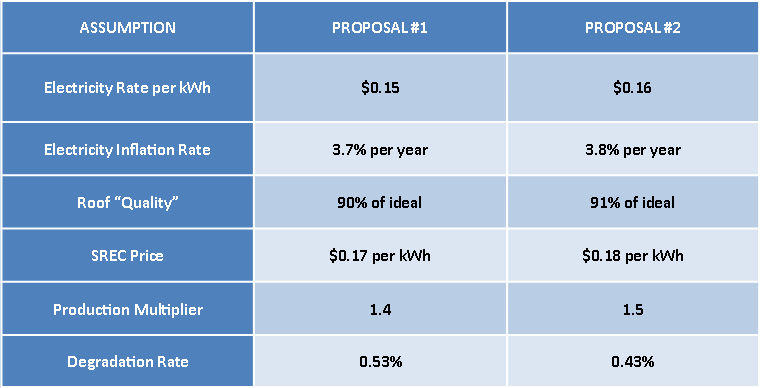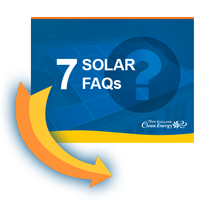Measurements are supposed to be exact. But are they? Is your bathroom scale always right? OK, maybe that’s a bad example. Safe to say, though, that measurements come with some wiggle room, especially when it comes to proposals for solar electric systems. There may not be as much difference between competing proposals as the sales people want you to think.
When you’re comparing proposals from different solar companies, it’s in your interest to read between the lines. Better yet, read below the lines, down to the assumptions usually presented as a footnote somewhere, which tell you what numbers the company used when estimating how much money you could save and make with solar.
6 Key Assumptions
These assumptions have a huge bearing on the benefits projected in your solar proposal:
- Your electricity rate — Installers use this to determine the value of your solar energy, but it’s not as easy to identify as you might think…Have you looked at your electric bill lately?
- The inflation rate for electricity prices — The higher the inflation rate used, the more “valuable” your solar electricity becomes.
- Roof measurements — These include pitch (angle), azimuth (direction) and shade. You would think pitch and azimuth would be concrete numbers, but different people using different tools can deliver different measurements. Shade measurements are a blend of art and science.
- The value of incentives – Many incentives, like Massachusetts SRECs which are traded in a market and Rhode Island Renewable Energy Growth payments which are based on system output – are impossible to predict with complete certainty.
- System production – Two key figures play into this number: What capacity (measured in watts) will your panels operate at in real life? And how much energy (measured in kWh) will your panels produce? Most installers use a standard multiplier to estimate production, e.g. 5,000 watts x 1.2 kWh per watt = 6,000 kWh of solar per year. But what if I nudge that up? Keep reading for the answer.
- Degradation rate – Solar panels are expected to lose a little of their power-producing ability each year. New England Clean Energy uses the “degradation rate” provided by the panel manufacturer. But if I nudge that number down a touch, it suggests you’ll get more power from your panels.
Over-estimating any of these variables can make one solar proposal look more favorable than another – more solar electricity, faster payback, better financial return. Even reputable installers can’t predict how fast electricity prices will go up, or how future weather will impact your system’s production.
Slight Change, Big Difference
Just look at how slight changes in these 6 assumptions change the financials for a 24-panel, 7,848-watt system. First the assumptions:
Minor changes, right? But the impact of these miniscule changes on the projected benefits is astounding. The slightly inflated assumptions shave a year off the payback time frame. And suddenly, your solar will cover 84% of your electric bill instead of 77%.
The monthly financial benefit goes up by $40 month ($119 + $137 versus $138 + $158.) If I’m the sales person selling Proposal #2, I say to my prospect, “That $40 more a month is almost $500 more a year, and $12,000 additional benefit over the life of the system!”
And if I’m the consumer? That extra $12,000 sounds really good.
Hopefully you see now that a tweak or two can make one proposal sound much better than another, when in fact both proposals use the exact same system but slightly different assumptions.
What To Do
So what’s a consumer to do?
Pay more attention to choosing quality equipment and an installer you are comfortable with than obsessing over the financials in the proposal. Don’t discount the financials completely, of course. But follow these tips:
- Expect some variance between proposals.
- Don’t assume the most favorable proposal is necessarily the best.
- If a proposal is wildly more favorable than the others, be suspicious.
- When you talk to the installer’s references, ask how accurate the quotes were.
- Select an installer that guarantees your system’s production.
On that last point…Car sellers don’t guarantee your miles per gallon. Heating companies don’t guarantee your boiler’s efficiency. But many solar companies will guarantee your system’s production, demonstrating their faith in the assumptions they used in your proposal.
A guarantee like New England Clean Energy’s 20-Year Performance Warranty is the safest way to ensure you’ll get what your proposal says you’ll get.
If you liked this article, you might also enjoy:
- What’s in a Solar Production Estimate?
- What’s in an American Solar Panel?
- Shopping for Solar – Don’t Just Focus on Dollars




 Download our 7 FAQs
Download our 7 FAQs


No comments yet. You should be kind and add one!
The comments are closed.